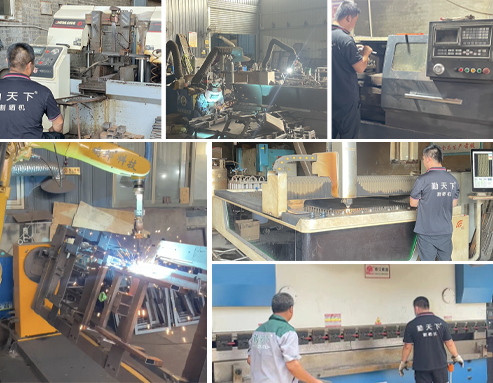Compact and Efficient Mini Rice Harvesting Equipment for Small Scale Farming Needs
The Rise of Small Rice Harvester Machines Transforming Agriculture
In recent years, agriculture has witnessed a significant transformation thanks to advancements in technology. One of the most important innovations has been the introduction of small rice harvester machines. These compact and efficient machines are revolutionizing rice farming, particularly in developing countries where traditional farming methods have long dominated. This article explores the benefits, features, and impact of small rice harvester machines.
Efficiency and Productivity
Small rice harvester machines are designed to improve efficiency and productivity in rice harvesting. Traditional methods often require numerous laborers working long hours, which can be both time-consuming and costly. With the introduction of small rice harvesters, farmers can significantly reduce the time required to harvest rice. These machines can complete the task in a fraction of the time it would take manual labor. As a result, farmers can harvest their crops more quickly, allowing them to plant and harvest multiple crops in a single season, thereby increasing overall productivity.
Accessibility for Small-Scale Farmers
One of the most significant advantages of small rice harvesters is that they are accessible to small-scale farmers. Traditionally, larger harvesting machines were prohibitively expensive and typically out of reach for many farmers in developing areas. However, small rice harvesters are designed to be affordable and easy to operate, making them suitable for farmers with limited financial resources. This accessibility empowers smallholder farmers to adopt modern agricultural practices and enhances their ability to compete in the market.
Reduction of Labor Costs
small rice harvester machine

Labor costs have been a significant concern for farmers, especially in regions where agricultural work is heavily reliant on human labor. Small rice harvesters drastically reduce the need for manual labor, leading to lower labor costs for farmers. This cost-effectiveness can lead to increased profit margins for smallholder farmers, allowing them to reinvest in their farms and improve their livelihoods.
Improved Crop Quality
Utilizing small rice harvesters not only speeds up the harvesting process but also ensures better crop quality. Manual harvesting methods can sometimes result in damaged grains, which adversely affects the quality of the harvest. Small rice harvesters are designed to minimize grain loss and preserve the integrity of the rice during the harvesting process. This results in higher quality produce, which can fetch better prices in the market.
Environmental Sustainability
In addition to the economic benefits, small rice harvester machines contribute to environmental sustainability. By mechanizing the harvesting process, farmers can reduce the need for chemical pesticides and fertilizers, as the machines can operate with greater precision. Furthermore, with enhanced efficiency, less land is subject to erosion and degradation, contributing to healthier ecosystems.
Conclusion
The advent of small rice harvester machines marks a critical development in the agricultural sector, particularly in rice cultivation. These machines have made harvesting more efficient and accessible, significantly reducing labor costs while improving the quality of produce. As technology continues to advance, it is crucial for agricultural policies and programs to support the adoption of such innovative solutions. Ultimately, small rice harvesters not only transform the lives of farmers but also contribute to food security and sustainability in a rapidly changing world. With continued investment in these technologies, the future of rice farming appears bright and promising.
Latest news
-
When to Upgrade Your Old Forage HarvesterNewsJun.05,2025
-
One Forage Harvester for All Your NeedsNewsJun.05,2025
-
Mastering the Grass Reaper MachineNewsJun.05,2025
-
How Small Farms Make Full Use of Wheat ReaperNewsJun.05,2025
-
Harvesting Wheat the Easy Way: Use a Mini Tractor ReaperNewsJun.05,2025
-
Growing Demand for the Mini Tractor Reaper in AsiaNewsJun.05,2025
